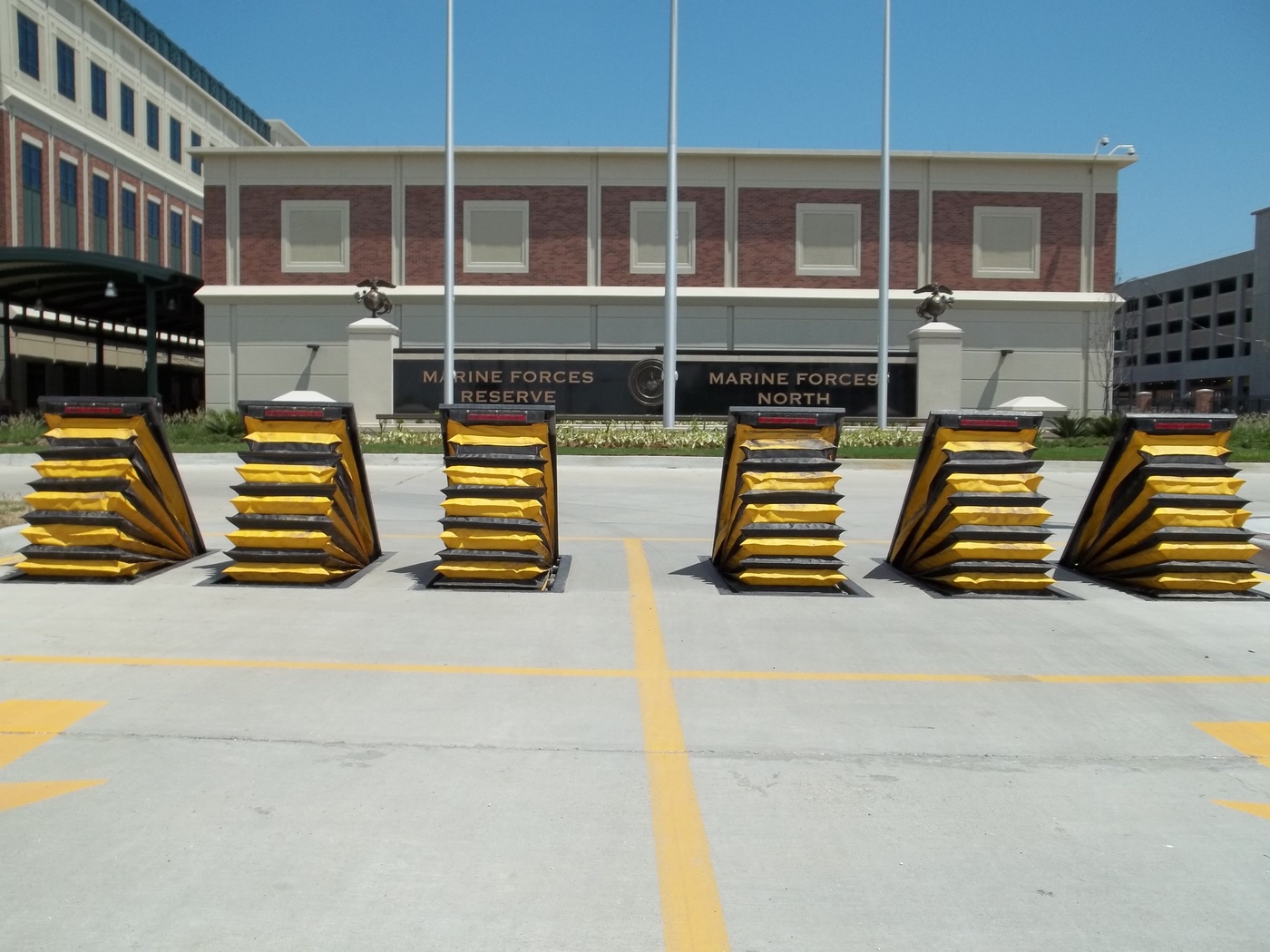The Facts About Wedge Barriers Revealed
Table of ContentsHow Wedge Barriers can Save You Time, Stress, and Money.The 7-Second Trick For Wedge Barriers

All About Wedge Barriers
g., springtime assistance 65 )may be dealt with to completion of the spring rod 58 to allow compression of the springtimes 60. As the springtimes 60 are compressed between the spring sustains 62, the spring assembly 54 produces a force acting on the cam coupled to the spring rod 58 in a direction 66. The staying force applied to
the cam web cam deploy the wedge plate 16 may might provided given an electromechanical actuator 84 or other various other. Thus, the spring assembly 54 and the actuator 84(e. g., electromechanical actuator)may operate with each other to translate the webcam and raise the wedge plate 16.
As pointed out above, the spring setting up 54 puts in a continuous pressure on the camera, while the electromechanical actuator may be controlled to put in a variable pressure on the webcam, thus enabling the training and lowering( i. e., releasing and withdrawing )of the wedge plate 16. In specific embodiments, the consistent force applied by the springtime setting up 54 might be adjustable. g., electromechanical actuator) is impaired. As will certainly be appreciated, the springtime assembly 54 might be covered and protected from particles or other elements by a cover plate(e. g., cover plate 68 displayed in FIG. 4) that may be substantially flush with the elevated surface area 38 of the structure 14. As mentioned over, in the deployed position, the wedge plate 16 serves to obstruct gain access to or traveling beyond the barrier 10. As an example, the obstacle 10(e. g., the wedge plate 16 )might obstruct pedestrians or vehicles from accessing a residential or commercial property or path. As discussed above, the barrier 10 is affixed to the support 30 safeguarded within the foundation 14,

front braces 71. Therefore, the affiliation settings up 72 may pivot and rotate to enable the collapse and expansion of the linkage settings up 72 throughout retraction and deployment of the bather 10. The link assemblies 72 cause movement of the wedge plate 16 to be limited. If a vehicle is traveling in the direction of the released wedge plate 16(e. For instance, in one circumstance, the security legs 86 might be extended throughoutmaintenance of the barrier 10. When the security legs 86 are released, the security legs 86 support the weight of the wedge plate 16 against the surface area 12. Because of this, the lifting system 50 may be shut down, serviced, eliminated, replaced, etc. FIG. 5 is partial viewpoint view of a personification of the surface-mounted wedge-style obstacle 10, highlighting the camera 80 and the camera surfaces 82 of the training device 50. Particularly, two webcam surface areas 82, which are referred to as reduced webcam surface areas 83, are placed listed below the cam 80. The reduced webcam surfaces 83 might be fixed to the surface 12 (e. As an example, the reduced webcam surface areas 83 and the placing plate 85 might create a single piece that is protected to the support 30 by screws or other mechanical bolts. Additionally, two cam surface areas 82, which are described as upper cam surface areas 87, are positioned over the web cam 80 and coupled to (e. In various other personifications, interfering layers or plates might be placed between the surface area 12 and the reduced cam surface areas 83 and/or the wedge plate 16 and the top web cam surface areas 87 As pointed out over, the cam
80 converts along the web cam see this here surface areas 82 when the wedge plate 16 is raised from the pulled back position to the released setting. Additionally, as stated over, the spring setting up 54 (see FIG. 3 )may provide a force acting upon the camera 80 in the direction 102 via spring rod 58, which may reduce the pressure the electromechanical actuator 84 is called for to use to the webcam 80 in order to actuate and raise the wedge plate 16. 1 )to the deployed placement(see FIG. 4). useful site As shown, the cam 80 includes track wheels 104(e. g., rollers), which get in touch with and equate along the web cam surfaces 82 throughout procedure.